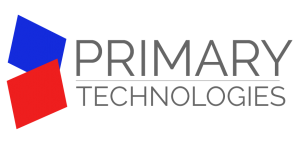Original Source: https://www.hongkiat.com/blog/mac-keyboard-shortcuts/
macOS is a robust operating system used worldwide. However, many Mac enthusiasts might not be aware of the numerous keyboard shortcuts that enhance its usability.


Interested in harnessing more from your Mac? Here’s an extensive list of Mac keyboard shortcuts. Whether it’s accessibility functions, desktop configurations, or in-system searches, these shortcuts will enable you to perform tasks efficiently, bypassing the need for a mouse.
macOS Keyboard Shortcuts for:
Starting up Mac
Shutting down Mac
Accessibility
Finder
Desktop
Screen Capture
Spotlight
Starting Up Your Mac
Booting your Mac usually involves pressing the power button and waiting for the iconic Apple logo (and chime) before the operating system loads. However, there are multiple modes in which you can start your Mac, each offering different features and functionalities.
For example, you can boot your Mac in Safe Mode to troubleshoot issues, or use the Target Disk Mode to operate your system using an external medium.
Read Also:
How to Troubleshoot and Fix a Gray Screen at Mac Startup
To access these modes, you’ll need to press and hold a specific combination of keys right after hitting the power button. For instance, to enter Safe Mode, power up your Mac and immediately press and hold the Shift key.
There are various other modes to explore, enhancing your Mac startup experience.
↑ Back to Main Menu
Startup from built-in macOS Recovery system.
Command + R (hold).
Startup from macOS Recovery system over Internet.
Command + Option + R (hold).
Startup to Startup Manager.
Option (hold).
Reset NVRAM / PRAM.
Command + Option + P+ R (hold).
Startup in Safe Mode.
Shift (hold).
Startup from Apple Diagnostic utility.
D (hold).
Startup from a NetBoot server.
N (hold).
Startup in single-user mode.
Command + S (hold).
Startup in target-disk mode.
T (hold).
Startup in verbose mode.
Command + V (hold).
Shutting Down Your Mac
When wrapping up on a MacBook, many users simply close the lid, letting it enter sleep mode. On an iMac, some might wait for the Energy Save mode to activate.
Yet, there are efficient keyboard shortcuts to shut down your Mac. Explore these shortcuts below to enhance your user experience.
Read Also:
How to Force Quit Mac Apps
↑ Back to Main Menu
Turn on Mac / Wake it up from sleep.
Power button (press once).
Force Mac to turn off.
Power button (press hold 5 seconds).
Put Mac to sleep.
Command + Option + Power button.
Put display to sleep.
Control + Shift + Power button.
Select between restart, sleep or shutdown.
Control + Power button.
Force Mac to restart.
Command + Control + Power button.
Quit all apps, then shut down Mac.
Command + Control + Option + Power button.
Log out Mac user account, asking for confirmation.
Command + Shift + Q
Log out Mac user account, without asking for confirmation.
Command + Shift + Option + Q
Shortcuts for Accessibility
Mac offers dedicated “Accessibility Options” tailored for individuals with special needs or disabilities. This includes features like screen zoom, voiceover, inverted display colors, and more. Users can effortlessly manage, activate, or deactivate these features through keyboard shortcuts or assistive devices.
↑ Back to Main Menu
Show Accessiblity Options.
Command + Options + F5
Toggle VoiceOver on/off.
Command + F5
Open VoiceOver Utility.
Control + Option + F8
Turn Zoom on/off.
Command + Option + 8
Zoom In.
Command + Option + +
Zoom Out.
Command + Option + –
Invert Colors settings on/off.
Command + Control + Option + 8
Increase Contrast.
Command + Control + Option + ,
Reduce Contrast.
Command + Control + Option + .
Shortcuts for Finder
The Finder on a Mac serves as your central dashboard, granting you access to all your documents, apps, and services. Given its versatility, using keyboard shortcuts becomes crucial to execute specific actions, organize files and folders, and swiftly access content.
↑ Back to Main Menu
Use Quick Look to preview selected item.
Space bar
Move items to Bin.
Command + Delete
View items in Finder windows as icons.
Command + 1
View items in Finder windows as list.
Command + 2
View items in Finder windows in columns.
Command + 3
View items in Finder windows with Cover Flow.
Command + 4
Duplicate selected files.
Command + D
Eject disk or volume.
Command + E
Search in Finders’s window.
Command + F
Show Get Info window for selected file.
Command + I
Open the Computer window.
Shift + Command + C
Open the desktop folder.
Shift + Command + D
Open Go to Folder window.
Shift + Command + G
Open Home folder of current macOS user.
Shift + Command + H
Open iCloud Drive.
Shift + Command + I
Open the Network window.
Shift + Command + K
Open the Downloads folder.
Shift + Command + L
Create a new folder.
Shift + Command + N
Create a new Smart Folder.
Option + Command + N
Open the Documents folder.
Shift + Command + O
Show/hide Preview pane in Finder windows.
Shift + Command + P
Open AirDrop window.
Shift + Command + R
Show/hide tab bar in Finder windows.
Shift + Command + T
Open the Utilities folder.
Shift + Command + U
Show/hide path bar in Finder windows.
Option + Command + P
Show/hide sidebar in Findow windows.
Option + Command + S
Show View Options.
Command + J
Open Connect to Server window.
Command + K
Make an alias of selected item.
Command + L
Open a new Finder window.
Command + N
Create new tab in current Finder windows.
Command + T
Use Quick Look to preview selected file.
Command + Y
Use Quick Look in slideshow mode of selected files.
Option + Command + Y
Go to previous folder.
Command + [
Go to next folder.
Command + ]
Close the selected folder. (When in List view).
←
Open the selected folder. (When in List view).
→
Go to folder that contains the current folder.
Command + ↑
Go into folder of current selected folder.
Command + ↓
Open item in a separate window and close current window.
Option + Double-clicking item.
Open folder in a separate tab.
Command + Double-clicking item.
Move the dragged item instead of copying it.
Command + dragging item to another destination.
Copy the dragged item.
Option + dragging item to another destination.
See folders that contain current folder.
Command + click window title.
Shortcuts for Desktop
Mac provides an array of keyboard shortcuts designed to amplify your desktop experience. They’re particularly beneficial for users managing multiple desktops or those frequently tweaking appearance settings.
Read Also:
How to Put Your Name on macOS Menubar
↑ Back to Main Menu
Decrease brightness.
F1
Increase brightness.
F2
Empty Bin.
Command + Shift + Delete
Empty Bin without confirmation dialog.
Option + Command + Shift + Delete
Show all windows of active app.
Control + ↓
Show/hide the Dock.
Option + Command + D
Launch/quit Mission Control.
Control + ↑
Launch/quit Mission Control.
F3
Open Appearance Preferences.
Option + F3
Show desktop.
Control + F3
Move to space on left.
Control + ←
Move to space on right.
Control + →
Switch to a specific (#n) desktop. Example: To switch to desktop 3, use Control + 3.
Control + #.
View installed apps.
F4
Shortcuts for Capturing Screens on macOS
With the rise of virtual work and learning environments, the need for screenshots and screen recordings has grown immensely. Thankfully, macOS comes equipped with integrated screenshot and screen-recording features.
Read Also:
Screen Capture Keyboard Shortcuts for Windows & macOS
Below is a list of keyboard shortcuts to leverage the diverse functionalities of the Mac screen capture tool.
↑ Back to Main Menu
Screen capture entire screen, save as picture.
Command + Shift + 3
Screen capture custom area, copies to clipboard.
Command + Shift + Control + 3
Screen capture custom area, save as picture.
Command + Shift + 4
Screen capture custom area, copies to clipboard.
Command + Shift + Control + 4
Screen capture an open window or app.
Command + Shift + 4, press Space bar
Launch and customize screen capture options.
Command + Shift + 5
Shortcut for Spotlight
Spotlight serves as an efficient tool on your Mac, helping you locate items such as apps, documents, music, and even emails. Explore the list of keyboard shortcuts below to enhance your productivity with Spotlight.
↑ Back to Main Menu
Launch/close Spotlight.
Command + Space bar
Move to next result.
↓
Move to previous result.
↑
Move to first result in next category.
Command + ↓
Move to first result in previous category.
Command + ↑
Open selected result.
Enter
See selected file in an app.
Command + R
Open a Finder window with selected result.
Option + Command + Space bar
More Mac-related Shortcuts:
Keyboard Shortcuts for Messages (iMessage)
Compressing Files & Folders Using Keyboard Shortcuts
Ultimate Screen Capture Keyboard Shortcuts
The post 100 macOS Sonoma Keyboard Shortcuts appeared first on Hongkiat.





